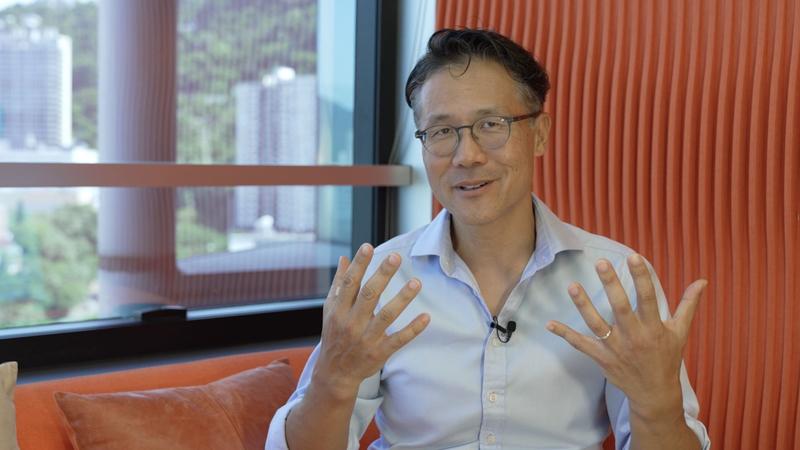Editor’s note: In this installment of the series, we talk to Joe Ngai, managing partner of McKinsey Greater China, who discusses the changes he has witnessed in the city over the last quarter-century, and who foresees a rosy future for HK as it grows into its role within the Guangdong-Hong Kong-Macao Greater Bay Area.
 Joe Ngai, managing partner of McKinsey Greater China. (PHOTO PROVIDED TO CHINA DAILY)
Joe Ngai, managing partner of McKinsey Greater China. (PHOTO PROVIDED TO CHINA DAILY)
![]()
Reviewing Hong Kong’s chronicle from 1997 — when Hong Kong was returned to China — to the present, Joe Ngai, managing partner of McKinsey Greater China, said he is most impressed by how the special administrative region became the financial center not just of the country, but of all Asia. “It’s just remarkable,” he said.
An appointee to various HKSAR government advisory committees, including the Financial Services Development Council and the Financial Infrastructure Committee of the Hong Kong Monetary Authority, Ngai is one of the best witnesses to Hong Kong’s “before and after” story.
The future of Hong Kong lies in and is intertwined with the entire Guangdong-Hong Kong-Macao Greater Bay Area.
Joe Ngai, managing partner of McKinsey Greater China
“I still remember, in 1997, a lot of people questioned if Hong Kong’s financial markets were going to be successful. They were worried about the market’s stability and the Hong Kong (US) dollar peg,” Ngai recalled.
Twenty-five years later, the doubt proved to be “unnecessary and naive”, Ngai said. Looking at the financial market’s size today, compared with what it was before 1997, the difference is self-evident and astonishing, he said.
“People who left (the city) around 1997 have missed out on the golden 25 years of Hong Kong development. It’s remarkable that Hong Kong has continued to prosper, with accelerated growth, which was realized on the back of the giant strides made by the (Chinese) mainland,” Ngai said.
Furthermore, Hong Kong’s pinnacle of prosperity is yet to come, Ngai said. “The best years of Hong Kong are ahead of us, rather than behind us,” he said.
The future of Hong Kong lies in and is intertwined with the entire Guangdong-Hong Kong-Macao Greater Bay Area, he said. To Ngai, the future laid out for the city is foreseeably rosy, but whether the picture turns out to be real or an elusive mirage depends heavily on how well Hong Kong uses its inherent advantages and lives up to the central government’s expectations of the SAR.
In both the short and the long term, Hong Kong should and will be the engine for the Greater Bay Area in a few areas; specifically, financial services, professional services, innovation and technology, and economic and enterprise globalization, Ngai said.
The central government makes it clear that the Outline Development Plan for the Guangdong-Hong Kong-Macao Greater Bay Area, which was promulgated in 2019, will support Hong Kong’s effort to consolidate and enhance its status as an international financial, transportation and trade center as well as an international aviation hub, a global offshore renminbi business hub, and an international asset-management center and risk- management center.
Hong Kong has all the advantages that are conducive to fulfilling the roles that the central government expects of the SAR, and the city has the steadfast backing of the national authority, Ngai continued. And Hong Kong can’t afford to miss out on the opportunity, he added.
There is also a “neighbor effect” that renders Ngai’s confidence in Hong Kong’s promising future more plausible. The neighbor, referring to the other cities in the GBA, share a well-defined personality — “innovative, energetic, globalized” — that ensures the organic, sustainable and constant flow of avant-garde ideas, professionals and capital, Ngai said.
He added that “innovation” has become a label attached to the GBA whenever he talks to his clients on the mainland. In a macroeconomic sense, Ngai said, the percentage of the young population is one of the overriding metrics to forecast or gauge the economic outcome within the given area. “Young people are the trend and future-setters,” and the epitome of energy, Ngai said. The GBA is a meeting point for young and entrepreneurial minds, setting the energetic tone necessary for growth, he added.
“Relative to all other regions in the Chinese mainland, the GBA probably is the most cosmopolitan and most connected to the rest of the world,” Ngai said.
For example, Shenzhen, Hong Kong’s closest GBA city, has risen from a backwater farmland to stellar prominence over the past 30 years, stunning the world with its deluge of innovations and unicorns, he said. “Shenzhen will be a fantastic city to do business and live in, which is actually a very good thing for Hong Kong. Hong Kong will feel the flow from Shenzhen and other GBA cities, and benefit from it,” Ngai said.
It’s a matter of the glow from one neighbor radiating to the others, he said.
Admittedly, Hong Kong has many issues to address, such as a widening wealth disparity and a housing shortage, Ngai said. But he believes that while Hong Kong is on the way to achieving full-blown development, thanks to the opportunities provided by the central authority, these nagging issues will be resolved along the way. In other words, the opportunities that Hong Kong is lavished with are not only for inventing something new but also for mending something old.
“We’re blessed with opportunities and resources. We have to execute and deliver accordingly,” Ngai said.


